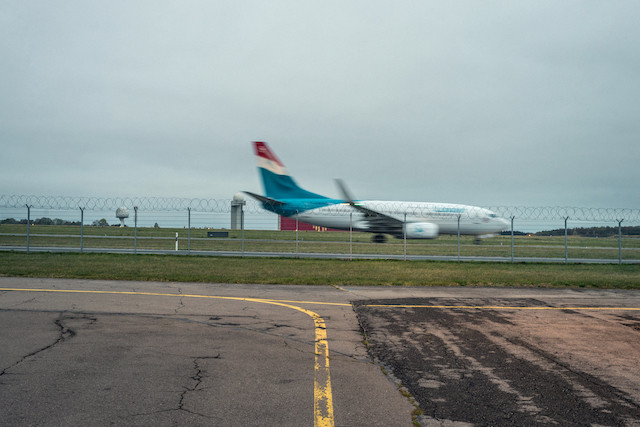Transport minister François Bausch (Déi Gréng) mentioned the 14 April 2015 incident in his response to a parliamentary question published Tuesday in relation to the drone, which paralysed air traffic at London- Gatwick airport at the end of 2018, from Mars di Bartolomeo (LSAP).
Bausch wrote that the incident “involving an unauthorised and unidentified drone and a passenger aircraft, which was the subject of a formal enquiry from the administration of technical investigations.” A June 2018 report on the incident explained that the Bombardier DHC-8-402, registered LX-LGG, being flown from Munich airport to Luxembourg, approached the runway threshold at around 3:55pm and, at an altitude of 2,300ft, experienced a “near miss with a remotely piloted aircraft system”.
“The crew continued the approach without performing an avoidance manoeuvre and landed the aircraft safely,” the report said. The incident was reported to police who were not able to find the drone or identify the operator. The report also outlined 14 other near misses with drones in Luxembourg or involving Luxembourg operators, among them was one involving a helicopter near Esch-sur-Alzette on 23 May 2017.
While drones are considerably smaller than commercial aircraft, the report points out they can damage windscreens, rotors on helicopters, and generally cause “significantly more damage than a bird of equivalent mass”.
Bausch said that implementing a system that would detect and neutralise drones around the airport remained “extremely complex”. “Radars used to manage air traffic are not capable of detecting flying objects that small. As such, only specialised radars or other military-type technologies can do this,” he said. Luxembourg air navigation administration ANA is reportedly looking into other solutions for detecting drones.
Under Luxembourg law, special permission must be obtained to fly drones within a five-kilometre radius of the airport and much of the airport itself is considered a no-drone-fly-zone.
